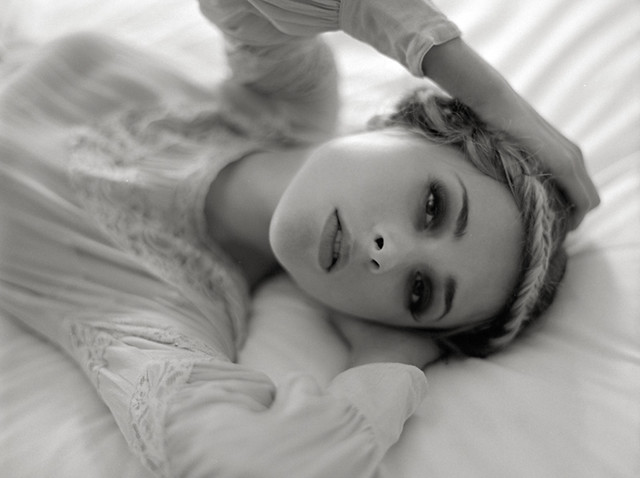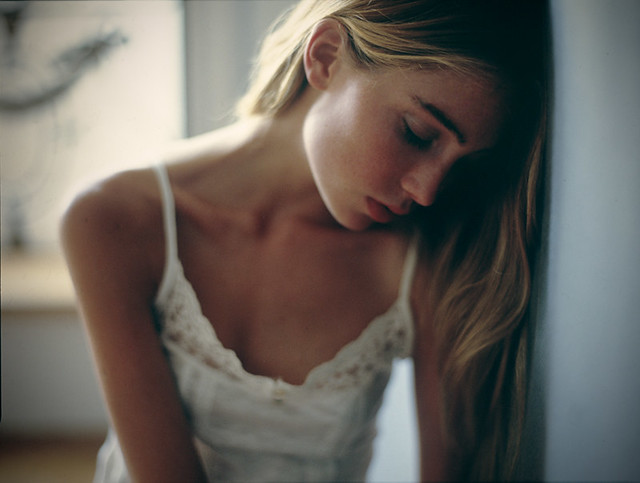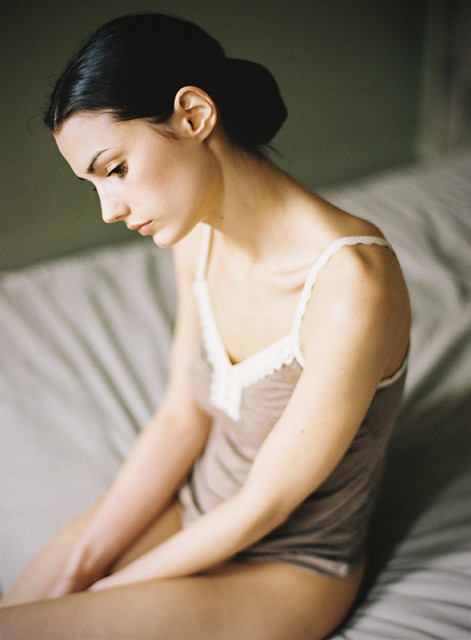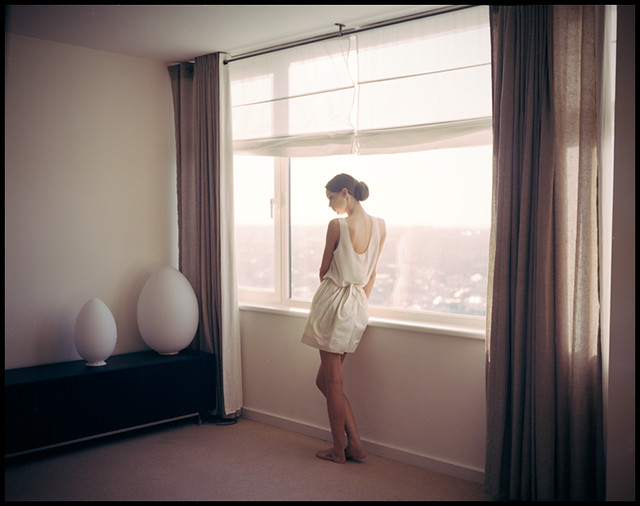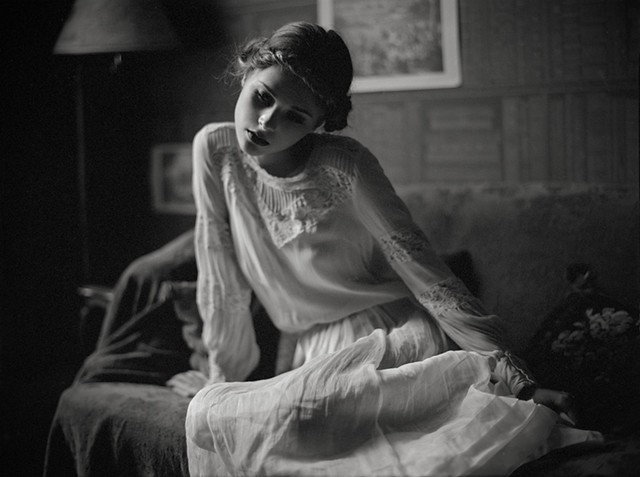Interview with Portrait Photographer Jan Scholz
This interview has first been published at the Critique Portfolio Pro flickr group in 2013. I thought you might be interested to read this interview again, here on my new blog.
I was able to interview Jan Scholz, a portrait photographer based in Brussels. Jan exclusively uses analog film cameras. But this is only one secret ingredient to his very emotional and powerful portraits.
Jan, first of all I would like to thank you for taking the time to share your thoughts with the members of our group. Please tell us a little bit about yourself and how you got into photography?
I was born and lived most of my life in the north of Germany. Since 7 years I live abroad, first in Maastricht, NL and since 3 years in Brussels, Belgium. I started photography in Maastricht as a spare time activity, taking pictures around town with my newly acquired digital SLR. I was motivated further by the positive feedback I received on photo sites and soon afterwards turned towards portraits. From then on photography became almost an obsession, consuming most of my spare time.
When viewing your images I feel as if there is a strong likeness in the images even though many were photographed at different locations and different times. Please share with us how you are able to accomplish this consistency?
I don’t usually answer with a quote, but this one really applies to me. I think it was Testino who said: “Style is not about repeating yourself, its the result of the obsession to express yourself through your pictures”; And I think this is the main reason why photography is so fascinating to me, I can create my own world and use it as a stage for emotions, stories and scenes, that matter to me, that I find beautiful. I often do not have a defined concept for a shoot and just let myself be driven by what I find, the location, the light, the model.
You have chosen to work with analog film in an almost all-digital world. Is it the format or the film that attracts you? What digital camera/sensor would attract you to digital?
I switched to analog after I already had a very good grasp on digital cameras and photoshop. The reasons are multi fold, and include: I love the look of film right from the scanner (or out of the darkroom, when having the opportunity). I clean some dust and spots, do a mini tweak on the levels, some toning and I am done.
I always loved black and white photography, but you will hardly find any black and white pictures from my digital period, as I was never happy with the conversion and the resulting tones, regardless of the tools used. My first scan of a simple black and white negative was already a revelation. Film is like a beautiful canvas the image is painted upon. To me, digital images in comparison look too clean and sterile, too perfect. I am not saying the digital look is good or bad, it just does not work for me.
Another reason are the beautiful film cameras that I own. They are a joy to use, their simplicity, their vintage feel, the big, bright view finders to look through, the sound of the shutters, the feel of the mechanics when forwarding the film. All these factors are not measurable in megapixels, dynamic range or frames per second, but they inspire me and contribute to the joy I have when photographing. Maybe I am stretching a bit, but I think they also have a positive impact on most people I photograph. Especially using a large format camera tends to fascinate people, they feel like being part of something special.
The limitations of each camera, each format is forcing me to approach photography in a different way. I take different pictures with a fast and mobile 35mm SLR than with a slow and stationary Large Format Camera. Going out with such a tripod based camera and knowing that I have just 10 or maybe 20 pictures to take, will make me photograph completely differently than with a 8GB card in the DSLR. It turned the way I photograph up side down. I look a lot more careful, re-consider every composition and pose again and again before clicking (or not clicking) the shutter. This thought me a lot and I believe I learned most I know about photography and composition after switching to film.
Our group recently had a discussion regarding the difference in the look and feel of digital images vs film images. The discussion focused around digital post processing techniques to achieve the look of film. Do you think digital work can achieve the look of film?
For some situations, some scenes, it may work, for other situations, it maybe does not. I have yet to see the smoothness of tones you get from a well exposed medium format film in a digital file. And I have not yet seen a digital camera or photoshop filter that is capable of properly imitating the look from a large format camera, i.e. for example the look of a 300mm lens on a 8x10 camera, which has an approximate field of view of a 40mm SLR lens, but the optical look of a 300mm lens. It something unique to the larger formats that I love.
For most formats and applications its probably true that digital has outrun film in terms of resolution, but in terms of "look" and tonality I am yet to be convinced. I am keeping my eyes peeled for a digital camera that I find joyful to use and that produces images that "feel right". Sometimes I use my digital (very dusty) Nikon D2x for the occasional snapshots and alike, but never find the results satisfying. After I twisted and turned the images through photoshop, it does not feel like my picture anymore.
Its a very personal opinion and decision. There are good reasons for digital and film, and everybody has the liberty to use whatever one likes and finds convincing. You can throw a lot of reasons pro-digital at me, it will not change how I feel about using film, for a multitude of reasons.
How much post work do you put into your images? Is most of your post done in the wet darkroom or in the digital darkroom? If you do much post will you share some of your techniques?
I don’t have regular access to a darkroom, so I am using a scanner to digitize and “enlarge"my images. Most of the work is done in the scanning process by selecting the appropriate gain and adjusting the levels of the image. Afterwards I open the image in photoshop to clean up spots and dust on the negative, use the curves to fine tune the contrast and give the image a slight sepia tone. In 95% of the cases that’s it. If there is a power outlet in the image that was not avoidable or something else disturbing, I use the liberty to clone it away. I normally have to look carefully to see if I already edited the image or if it is the raw scan. Just recently I found that I provided an unedited image to a magazine for publication. Neither I nor them noticed it, and only after I saw the power outlet in the magazine I noticed that I sent the raw scan. I don’t have any issues with subtle and well-executed photoshop edits, but I feel much better about a picture that looks good right "out of camera”.
The strong emotional impact of your images is evident. What kind of feelings do you intend to evoke within the viewer and how do you achieve the emotional depth in your work?
A model, or simply a face, has to capture my imagination. If I see a face of a model, I need to be able to place it into a picture. I sometimes work with male models as well, but I am more critical in my selection. Basically I love to work with a more diverse nature of people and locations, its just a matter of time. Nothing is easier than to ask a model agency for a test shoot, invest 3-4 hours of time and take a few pictures on a free day. I am currently working on a little portrait project and it takes a huge amount of time to investigate beforehand, find the right people, organize the sessions and locations, coordinate model releases, parent’s approvals etc. I could have easily done 10 shoots with models in the same time frame, hence the tendency to use models. But there are other things I photograph that I normally not show online, like a number of weddings of close friends, family etc.
The inherent beauty of youth is an almost universal fascination. Apart from the aforementioned obvious, what is it that makes you choose models you work with? Are you also working with male models and older people?
A model, or simply a face, has to capture my imagination. If I see a face of a model, I need to be able to place it into a picture. I sometimes work with male models as well, but I am more critical in my selection. Basically I love to work with a more diverse nature of people and locations, its just a matter of time. Nothing is easier than to ask a model agency for a test shoot, invest 3-4 hours of time and take a few pictures on a free day. I am currently working on a little portrait project and it takes a huge amount of time to investigate beforehand, find the right people, organize the sessions and locations, coordinate model releases, parent’s approvals etc. I could have easily done 10 shoots with models in the same time frame, hence the tendency to use models. But there are other things I photograph that I normally not show online, like a number of weddings of close friends, family etc.
Posing is quite important. Can you give some advice on how to achieve the excellent results you are able to render? Have you studied posing people or is it a natural gift?
I was helpless with posing models when I started, had no idea what I wanted, how to direct etc. I studied lots of other photographers, movies, paintings and acquired a portfolio of poses and scenes in my head that I can use if needed. However, I find the most beautiful scenes and expressions between poses, and here it is essential to watch your model carefully not to miss that fraction of a second of relaxed unawareness between two poses. And to come back to the digital-analog discussion: it helps a lot not to be distracted by a preview screen on the back of the camera, but keeping all your attention on the scene. I see quite a lot of photographers who spend most of their time monitoring their LCD-screen.
Do you have any advice for an amateur who is interested in starting to work with models? Where/How to start? What legal/usage rights do you reserve?
Easiest would be to start with friends, family, people you know. That reduces a bit the awkward experience when photographing strangers at the beginning, especially when you might be still learning to use your camera. I started directly with a model I found via a local model agency and it was a very weird experience. A good way to get started might as well be to book a workshop on model or portrait photography in your area. When you have some images to show, you can find models via various internet sites, facebook, modelmayhem, etc. You can also try to contact local model agencies and ask for test shoots with their “new faces”. Usage rights is subject to a variety of reasons. When shooting test shoots with model agencies, you will most probably be limited to use the images for your portfolio. With freelance models, friends, other people you can agree on anything you want. I would advise asking for some kind of agreement. Even though its paper work and annoying at times, it makes things easier when at some point you get a request for publication, image usage etc.
What are your further plans? Do you have any ongoing projects?
Basically, I will keep on doing what I do and hope to be able to find more time to work on new things. I always have some loose projects ongoing that I follow, some that need yet to be started. I photograph very much out of the passion to do so. If a certain idea grabs my attention, I drop everything else and might come back to it later, or not. I have enough deadlines, milestones and project plans at work, I enjoy that my photography is not subject to those.
Thank you very much for taking the time to answer my questions. It was a very inspiring and interesting interview.





